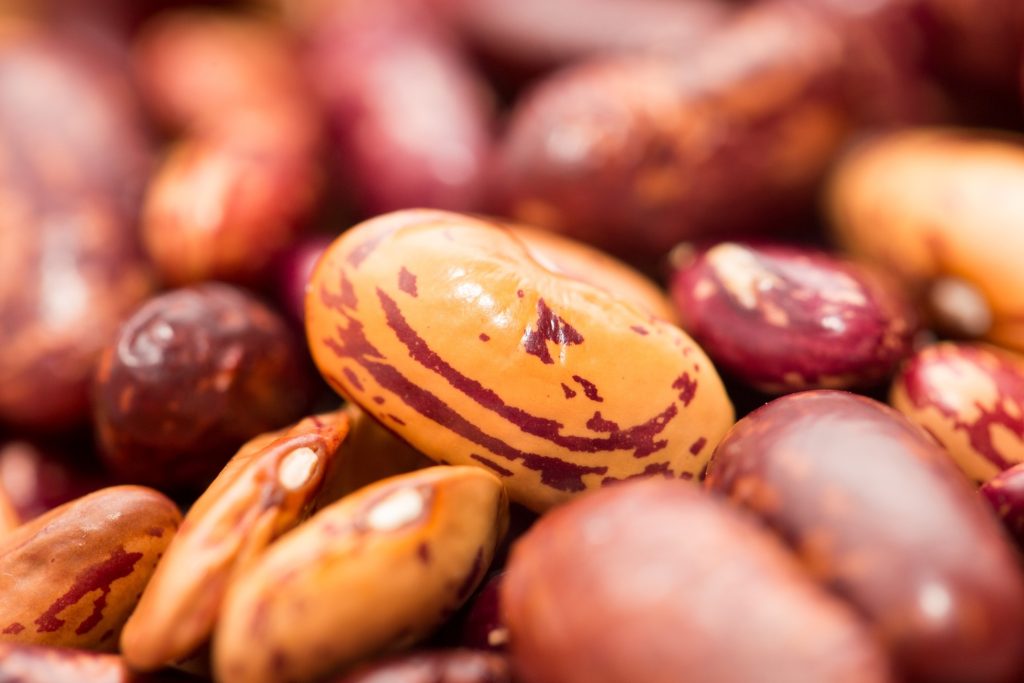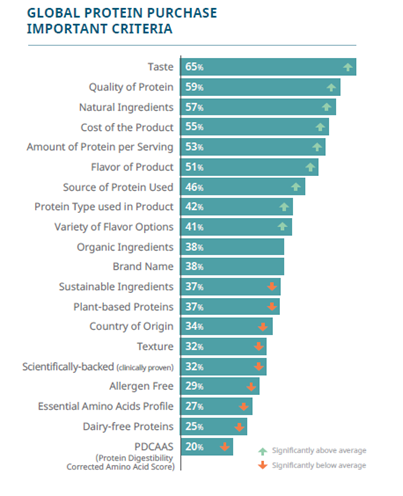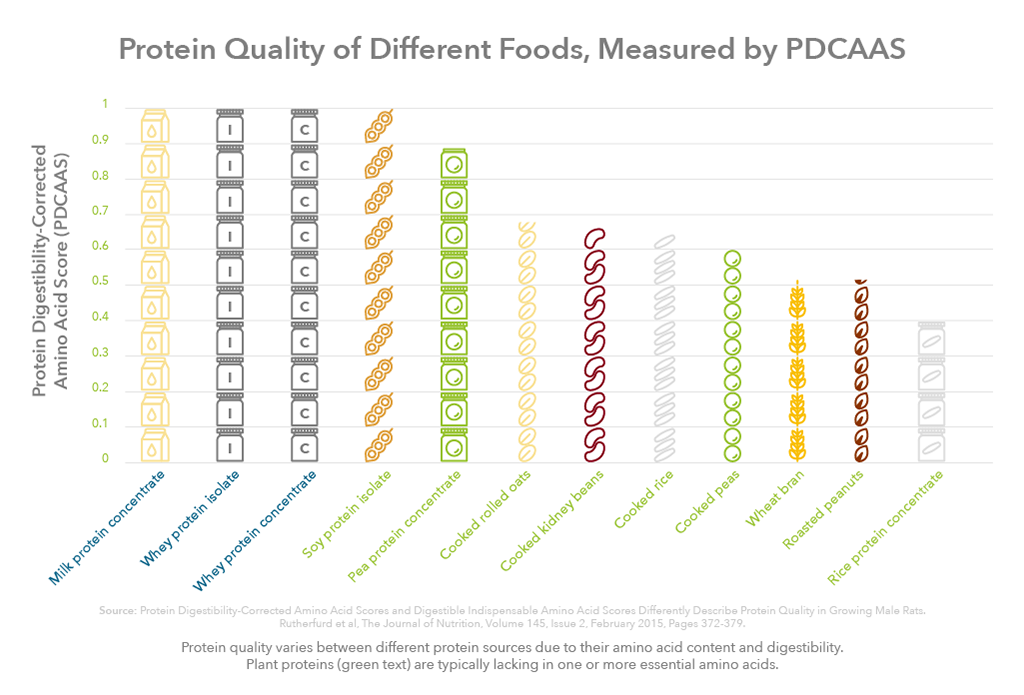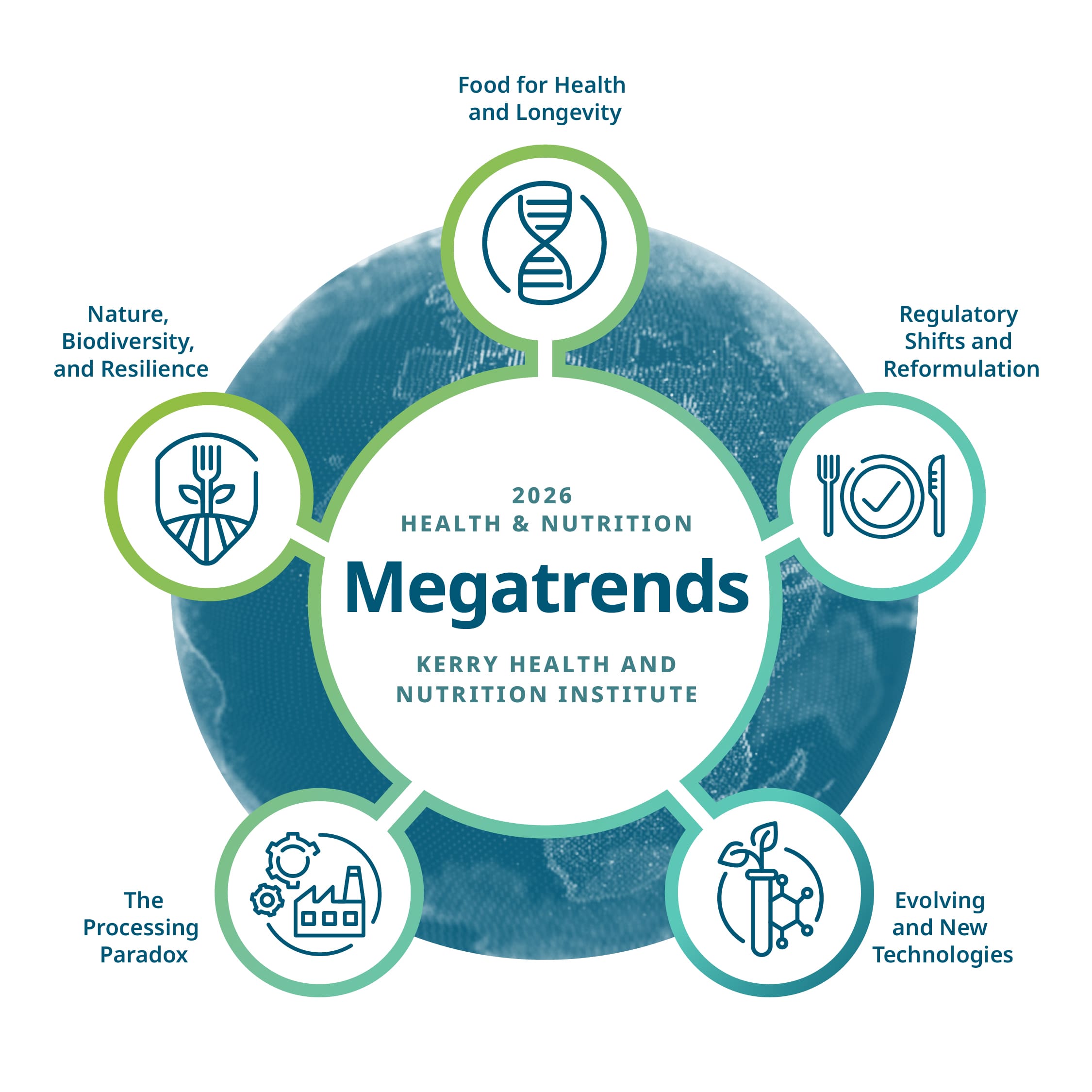Focus on the protein quality opportunity
Over the past decade, protein quality has come under intense scrutiny. Due to growing consumer focus on health and rising interest in proactive—versus reactive—nutrition, proteins have moved well beyond specialised nutrition and are now thriving in the general wellness space. In the last five years (2017-2021), the number of food and beverage global product launches with a ‘high/source of protein’ claim grew by 9%, according to Innova Market Insights. Alongside the focus on health and wellness, consumers are more focused on sustainability, driving the growth of plant-based protein food and beverage. In the past five years, the number of launches of plant protein food and beverages has grown by 17%.
With the pool of protein sources diversifying, parameters such as protein source and protein quality are becoming more important for consumers in their daily product choices. Therefore, there is an opportunity for food and beverage manufacturers to meet consumers’ needs by investing in protein quality while formulating protein food and beverage.
Protein quality differs depending on food source

Protein quality is a growing driver for consumers when purchasing protein products. With the increased popularity of plant-based food alternatives in the market, it is important to recognise that not all proteins are created equal. Certain protein sources are better suited to meet our nutritional and physiological requirements than others. There are several parameters to rank the nutritional quality of these different protein sources and consumers are becoming more familiar with them.
Protein amino acid composition
Amino acids (AAs) are the building blocks of proteins. Proteins are composed of 20 common AAs, 9 of which (Phenylalanine, Valine, Tryptophan, Threonine, Isoleucine, Methionine, Histidine, Leucine and Lysine) are categorised as essential amino acids (EAAs) or indispensable amino acids (IAAs). Arginine and Histidine are classified as conditionally essential as they are required in populations with specific physiological needs (growth, pregnancy, disease recovery, etc.).
EAAs cannot be synthesised by the body; therefore, these must be consumed in adequate amounts in the diet to prevent nutritional deficiencies (Lopez and Mohiuddin, 2022). Some proteins naturally contain adequate levels of EAAs, this is very often the case with animal-derived sources such as egg or milk. However, many plant proteins are deficient in one or more EAAs. For example, rice is deficient in Lysine and pea in Tryptophan.
The AA profile of a protein source varies based on a number of factors, including crop variety, seasonality, protein extraction method and further processing (e.g., protein hydrolysis, heat treatment, etc.). For this reason, EAA composition can differ significantly depending on the starting ingredient, i.e., bean/grain, flour, protein concentrate or protein isolate.
Protein digestibility
Another factor that affects protein quality is digestibility. During digestion protein is broken down by the gastrointestinal enzymes into peptides and AAs. AAs are responsible for important physiological functions such as hormone or neurotransmitter production, muscle protein synthesis as well as various cellular processes (Lopez and Mohiuddin, 2022; Boye et al., 2012). The body is not capable of absorbing intact proteins (i.e. how proteins exist natively in food) and must break them down to absorb them. Therefore, protein digestibility is an important factor to take into consideration since it can directly affect the nutritional value of proteins.
In general, animal proteins are easier to digest than plant proteins. The reason for lower digestibility of plant proteins is linked to the presence of anti-nutritional factors in plants (e.g., protease inhibitors, phytic acid, tannins, lectins, etc.). These anti-nutritional factors can hinder protein digestibility and consequently reduce their bioavailability. Antinutritional factor levels may be reduced during protein extraction from plants following fractionation and heat inactivation. It has been reported that plant protein isolates, the ingredient with the highest protein purity, contain low levels of antinutritional factors (Nosworthy, 2017). For this reason, isolation of plant protein is a means to improving protein digestibility. Other processing methods can be used to improve plant protein digestibility, such as soaking, boiling, microwaving, fermentation, or hydrolysis (Boye et al., 2012).
Consumers raising awareness on protein quality
The COVID-19 pandemic has accelerated consumer’s interest in their overall health and wellness. They are actively seeking information and tools to increase their understanding of health, its link with food and beverage, as well as functional attributes and nutritional benefits that their food can provide them with. Proteins are perceived not only as a critical macronutrient, but also as a supporter of overall health, muscle health and exercise, weight management, energy and even immune health.
Kerry recently undertook a global consumer research ‘The Protein Mindset’ where it surveyed more than 6,300 consumers across 12 countries within North America, Europe, Latin America and the Asia-Pacific region to examine wellness consumer attitudes, perceptions and preferences about dairy and plant protein-fortified food and beverage.

What the research highlighted is that while taste is still the primary driver of purchase for protein-fortified food and beverage, the quality of protein is the second most important driver.
This gives a very good indicator that consumers are putting more importance on protein quality than ever before. However, protein quality is a wide subject that comprises many parameters, it is important to go further and understand what ‘protein quality’ means to consumers.
While protein quality is at the top of the list of important purchase criteria, we also notice that other protein quality specificities such as ‘source of protein used’, ‘protein type used in product’ are also highly ranked.
However, other more technical protein quality specificities such as the Protein digestibility corrected amino acid score (PDCAAS), and EAA profile are taking a comparatively lower ranking. We can clearly identify a gap as PDCAAS and EAA are not automatically linked to ‘protein quality’. We believe this represents an opportunity for brands to deliver higher quality protein along with educating consumers on the different dimensions of protein quality.
We are already noticing that technical terms such as PDCAAS or EAA are being increasingly explained and commonly used in nutrition focused social media platforms which is highlighting that protein quality is a hot topic and consumers are getting increasingly familiar with it. The research also highlighted that Asian consumers and younger generations (millennials and gen Z) are the most familiar with protein quality specificities.
On the market there have been more product launches that are communicating on protein quality by putting on back claims such as ‘complete essential amino-acid profile’, ‘high protein quality’ and ‘complete protein’ or mention of PDCAAS. This is an excellent strategy to stand out in a product offering that is getting more and more busy as protein mainstreaming keeps increasing.
Measuring protein quality
PDCAAS (Protein digestibility corrected amino acid score)

Multiple methods have been developed by the scientific community to assess the nutritional quality of proteins (for review, see Boye et al., 2012). A common nutritional score used in the food industry is the Protein Digestibility-Corrected Amino Acid Score (PDCAAS). PDCAAS has been recommended by the FAO/WHO 1991 Expert Consultation. This score takes into consideration the level of limiting EAAs in the protein as well as protein digestibility (Equation 1).

Casein is used as the reference protein. The EAA requirements for a target population of children aged 2-5 years are recommended in the FAO/WHO 1991 report.
PDCAAS varies between 0 and 1, it can also be expressed as a %, ranging between 0-100 %. In instances where a protein yields a score > 1, it is recommended that the PDCAAS should be reported as 1. Proteins having a PDCAAS of 1 are classified as nutritionally complete since they are not lacking EAAs.
Initially, PDCAAS determination involved in vivo animal studies (rat). However, in recent years, an in vitro kit based on a patented method (Plank, 2017) using Medallion’s Animal-Safe Accurate Protein (ASAP) procedure was introduced by Megazyme to determine the protein digestibility.
PDCAAS is used to calculate the % Daily value (DV) in the USA and the Protein Efficiency Ratio (PER) in Canada (Marinangeli et al., 2018). Nutritional protein claims can be made based on DV or PER of foods as follows:
‘Good source of Protein’ for DV of protein for Reference Amount Customarily Consumed (RACC) ≥ 10% or PER ≥ 20;
‘Excellent source of Protein’ for DV of protein for RACC ≥ 20% or PER ≥ 40.
DIAAS (Digestible indispensable amino acid score)
In 2013, the FAO made the new recommendation of substituting PDCAAS with the Digestible Indispensable Amino Acid Score (DIAAS). DIAAS, which was developed by the team of Prof. Moughan in the Riddet Institute (NZ), has been positioned as a superior method to quantify the nutritive value of proteins more accurately. The DIAA ratio is calculated for each IAA relative to the reference IAA and its true ileal digestibility (Equation 2). The reference AA scoring pattern (AA requirements/protein requirements for maintenance and growth) used is for children aged between 6 months to 3 years. The DIAAS corresponds to the lowest DIAA ratio.

With DIAAy ratio, the Digestible Indispensable Amino Acid ratio for AA residue y; SID, the true ileal digestibility of Indispensable AA residue y.

DIAAS assesses the ileal digestibility of proteins using animal (pig) testing. Pigs have a digestion that is similar to humans, which makes them a good model for digestibility determination. DIAAS determines the amount of EAAs actually absorbed by the body, through the small intestine instead of theoretical calculation based on residual EAAs in feces as per the PDCAAS method. In addition, DIAAS values for single foods are not truncated to 1. Therefore, DIAAS is positioned as more adequate to rank the nutritional quality of proteins. The DIAAS value can be used to categorise protein quality (FAO, 2013):
- ‘High in protein’ for DIAAS value ≥1.00;
- ‘Source of protein’ for DIAAS between 0.75-0.99;
- No protein nutritional quality claim for DIAAS <0.75
Opportunity – protein nutritional optimisation strategies
As outlined earlier, not all protein sources are able to deliver all the EAAs in sufficient amounts and differences in digestibility exist. Consumers are also getting more familiar with protein quality. Several strategies are used by the food industry to manufacture protein ingredients and foods with a complete nutritional profile. These strategies rely on knowledge of protein composition, a good understanding of how to complement different protein sources and/or enhance protein digestibility.
Plant protein combination
The most common way to optimise EAA profile in protein formulations is by combining different plant protein sources in a complimentary fashion. The plant protein combination is informed by the limiting EAA in each protein source.
In early studies, Methionine, Lysine, Tryptophan and Threonine have been identified as the most common EAAs lacking in dietary proteins (Pieniaźek et al., 1975; Chardigny et al., 2016). Most plant proteins are reported as uncomplete in terms of their ability to provide EAAs. However, there are a few exceptions, such as soy, potato and canola, which have a balanced EAA profile.
With numerous plant protein ingredients displaying uncomplete EAA profile, it is common practice to combine complementary plant proteins to improve the EAA profile in the view of increasing their DIAAS or PDCAAS value (Gorissen et al., 2018; Herreman et al., 2020). An enhanced DIAAS/PDCAAS value can be achieved by combining pulses (which are generally limited in sulfur-containing AA (Methionine/Cysteine) or Tryptophan) with cereal/grains (generally limited in Lysine).
Food formulation with hybrid proteins
A few examples of products formulated with hybrid proteins have been available on the market for several years. However, these were not positioned as hybrid products as the main objective of combining protein sources was to achieve a cost saving. These products, which are fortified with a blend of dairy and plant protein, include mostly protein bars and nutritional beverages. There is an opportunity for food companies to better communicate on the hybrid positioning of these products and the benefits of hybrid formulations.
The rise in vegan food product launches is driven by the increasing number of consumers embracing a flexitarian diet. These consumers are eating animal-derived products, therefore, formulations combining plant and animal proteins are still consistent with the dietary choices of flexitarians. The nutritional objective of hybrid food is to allow consumers to increase their intake in plant proteins while reducing animal proteins in their diet (Alves & Tavares, 2019). Combining both animal and plant protein is an excellent strategy to improve the nutritional quality of a protein product as animal proteins are often complete and deliver all EAAs. However, there are to date only limited numbers of hybrid food launches on the marketplace.
Recent products were launched, mostly in the dairy alternative area by companies such as Premier Nutrition (Creamy Shake with oat and dairy), Live Real Farms (dairy and almond beverage), Bel (Margot brand combining milk and pulses) and Triballat (Paquerette brand blending dairy and various plant beverages).
Nutritional fortification of food products with free amino acids
AA supplementation of foods is not a novel practice. It has been employed mostly for bioactive properties of selected free AAs or AA blends (e.g., L-carnitine, Branched Chain Amino Acids – BCAAs). More recently, we are witnessing a shift whereby AA fortification of foods is used as a means to enhance their nutritional profile.
Products formulated with free AA are found in nutritional beverage applications. MyProtein has recently launched RTM beverages with complete AA profile fortified with plant proteins and Tryptophan. The company Joybraeu has launched alcohol-free beers fortified with BCAAs (with levels as high as 40-50% of the overall protein content).
Combination of intact and hydrolysed proteins
Protein hydrolysis can be leveraged to further improve protein digestibility, which may result in a better PDCAAS value. Protein hydrolysates have been used for many years in the formulation of specialised nutrition products (e.g., enteral nutrition, infant formulae, hypoallergenic products, foods for medicinal purposes, etc.). The food industry has since investigated their broader incorporation into products for the general population as they can be used as fast digestible proteins (Potier and Tomé, 2018).
Beyond dairy and plant – mycoproteins, algae, yeast, edible insects
Novel alternative proteins are emerging on the protein ingredient market. These sources originate from mycoproteins, algae, yeast and edible insects. They generally have an interesting sustainability positioning. In addition, diversification of protein sources could help alleviate the pressure on supply for conventional proteins linked to the popularity of vegan products.
Nowadays, these alternative protein options are niche since they are not manufactured at a very large scale. In addition, research on these ingredients is still in its infancy and significant work is required to better understand their nutritional profile and potential health concerns such as allergenicity and toxicity which are very much unknown.
Conclusion
With consumers integrating more plant-based protein options in their diet, protein quality is becoming an important subject matter for consumers and might become in the future a important tool of product differentiation in a crowded market. However, more education is required regarding the different parameters linked to protein quality such as EAA profile, PDCAAS and DIAAS.
This is an opportunity for protein food and beverage manufacturers to develop formulas with improved nutritional and digestibility quality while educating consumers about protein quality and how this is linked to optimal nutrition and health.
Many strategies are available to deliver better protein quality and with the increasing number of new protein sources introduced on the market the protein quality will be a key tool for consumers to choose between these different sources. Using protein quality parameters will support consumers making an informed choice for foods with good nutritional quality.
References
Alves, A. C., & Tavares, G. M. 2019. Mixing animal and plant proteins: Is this a way to improve protein techno-functionalities?. Food Hydrocolloids, 97: 105171.
Boye, J., Wijesinha-Bettoni, R., & Burlingame, B. 2012. Protein quality evaluation twenty years after the introduction of the protein digestibility corrected amino acid score method. The British journal of nutrition, 108 Suppl 2, S183–S211.
Chardigny, J.M. and Walrand, S., 2016. Plant protein for food: opportunities and bottlenecks. OCL Oilseeds and fats crops and lipids, 23(4): 1-6
FAO/WHO. 1991. Protein Quality Evaluation: Report of the Joint FAO/WHO Expert Consultation. FAO Food and Nutrition. Bethesda, Md., USA 4-8 December 1989. Paper 51. Rome: FAO.
FAO. 2013. Dietary protein quality evaluation in human nutrition. Report of an FAQ Expert Consultation. FAO food and nutrition paper, 92, 1-66.
Gorissen, S. H., Crombag, J. J., Senden, J. M., Waterval, W. A., Bierau, J., Verdijk, L. B., & van Loon, L. J. 2018. Protein content and amino acid composition of commercially available plant-based protein isolates. Amino Acids, 50(12): 1685-1695.
Herreman, L., Nommensen, P., Pennings, B., & Laus, M. C. 2020. Comprehensive overview of the quality of plant‐And animal‐sourced proteins based on the digestible indispensable amino acid score. Food science & nutrition 8 (10): 5379-5391.
Lopez M.J., Mohiuddin S.S. 2022. Biochemistry, Essential Amino Acids. In: StatPearls. Treasure Island (FL): StatPearls Publishing; 2022 Jan-. Available from: https://www.ncbi.nlm.nih.gov/books/NBK557845/.
Marinangeli C.P., Mansilla W.D., Shoveller A.K. 2018. Navigating protein claim regulations in North America for foods containing plant-based proteins. Cereal Foods World, 63(5):207-16.
Nosworthy, M. G., Tulbek, M. C., & House, J. D. 2017. Does the concentration, isolation, or deflavoring of pea, lentil, and faba bean protein alter protein quality?. Cereal Foods World, 62(4): 139-142.
Pieniaźek, D., Rakowska, M., Szkiłładziowa, W., & Grabarek, Z. 1975. Estimation of available methionine and cysteine in proteins of food products by in vivo and in vitro methods. British Journal of Nutrition 34 (2): 175-190.
Plank D. W. 2017. In vitro method for estimating in vivo protein digestibility. U.S. Patent No. 9,738,920. Assignee: General Mills, Minneapolis, MN.
Potier, M. and Tomé, D., 2008. Comparison of digestibility and quality of intact proteins with their respective hydrolysates. Journal of AOAC International, 91(4), pp.1002-1006.

 Alice holds an Engineering Degree in Food Science & Technology (ENSBANA, Dijon, France), MSc in Food Science (ENSBANA) and a PhD in Food Science (Danone Vitapole Palaiseau & ENSBANA). Alice has published over 70 peer-reviewed publications in the generation, isolation and characterisation of bioactive peptides from Dairy, Plant & Edible insect proteins as well as in the flavour characterisation of dairy products.
Alice holds an Engineering Degree in Food Science & Technology (ENSBANA, Dijon, France), MSc in Food Science (ENSBANA) and a PhD in Food Science (Danone Vitapole Palaiseau & ENSBANA). Alice has published over 70 peer-reviewed publications in the generation, isolation and characterisation of bioactive peptides from Dairy, Plant & Edible insect proteins as well as in the flavour characterisation of dairy products.  Ellen Murphy has been a Protein Scientist in Kerry for the past 2 years. Her work focuses on optimising the nutritional and functional properties of plant proteins within a range of applications such as beverages, protein bars and confectionery. Prior to this she has worked in industry in areas such as microencapsulation, bakery solutions and cream liqueurs.
Ellen Murphy has been a Protein Scientist in Kerry for the past 2 years. Her work focuses on optimising the nutritional and functional properties of plant proteins within a range of applications such as beverages, protein bars and confectionery. Prior to this she has worked in industry in areas such as microencapsulation, bakery solutions and cream liqueurs.  Mindy Leveille, MSc joined Kerry Taste & Nutrition in 2017 as part of the health and nutrition division. She is Currently working as Global Strategic Marketing Manager for Kerry’s protein business and is passionate about health and nutrition. She enjoys using this passion to support the development of innovative products that enable consumers to take a more proactive approach to their long-term health.
Mindy Leveille, MSc joined Kerry Taste & Nutrition in 2017 as part of the health and nutrition division. She is Currently working as Global Strategic Marketing Manager for Kerry’s protein business and is passionate about health and nutrition. She enjoys using this passion to support the development of innovative products that enable consumers to take a more proactive approach to their long-term health. 

